Learn How to Peel Peaches the quick and easy way by blanching. By simply boiling them and then dipping them into an ice water bath, the skin slides right off so you can pit and slice the peaches to use in your favorite peach pie, cobbler, or jam recipes.
I’ve also included an alternative method to remove the peach peel using a vegetable peeler or a paring knife.
Jump to Section
How to Peel Peaches by Boiling
The quickest, easiest way to peel peaches without damaging the flesh or losing too much of it is by blanching them then dipping them in an ice bath. This method results in the neatest, smoothest peeled peaches.
Step 1: Score the skin
Use a sharp knife (like a small paring knife) to make a shallow “X” on the bottom of each peach, about 2 inches in length. There’s no need to make a deep cut, just pierce the skin. Once blanched, this will lift up and create a little tab that you can grab and pull the skin off with your fingers.
Step 2: How to blanch peaches
Bring a large pot of water to a boil with enough liquid to cover the peaches when submerged. Blanch a few peaches at a time in the hot water until the score mark on the skin peels away from the flesh, about 20 to 30 seconds. If you put too many peaches in the pan at once the temperature of the water will drop and it will take longer to loosen the skin. The peaches will need to be in the water longer and the flesh will get mushy.
Step 3: Ice bath (Shocking)
Use a slotted spoon to remove the peaches and transfer them to an ice bath (a bowl of cold water and ice cubes). This is called shocking. The cold water will stop the cooking process so the fruit doesn’t get mushy. Remove the peaches when cool, after about a minute or so.
Step 4: Peel
You can use your fingers or a to peel the skin off the peach, or use a paring knife to help. The skin should peel off easily, if not, blanch and shock them again.
Alternative method: paring knife or peeler
Another way to peel a peach is to remove the skin with a sharp paring knife or a sharp vegetable peeler.
This method works with firm peaches, however when the peach is soft and ripe, it damages the flesh underneath. It also gives an uneven appearance to the peeled peach.
Place the paring knife or vegetable peeler at the stem end of the peach and press gently into the skin while pulling down to remove the peel. Don’t apply too much pressure or it will damage the flesh. Repeat until the peel is completely removed.
How to Pit and Slice Peaches
Once your peaches are peeled, it’s time to remove the pits and slice them for use in your recipe.
Cut the peach in half
Using a paring knife, cut along the natural indention all around the middle of the peach, down to the pit.
Remove the pit
Twist the peach gently in opposite directions to separate the halves. You can also put your thumbs along the cut line and gently pull the two halves apart.
Using your fingers, pull out the pit. You can use a paring knife to trim around the edges of the pit to loosen it if doesn’t release easily.
Cut into slices:
With the peach cut side down on the cutting surface, slice it into slices of the desired thickness, usually ¼ to ½ inches thick.
Use in your favorite recipe or freeze for later.
How to know if a peach is ripe
- A perfectly ripe peach will have a sweet, floral scent.
- It will have a deeper golden color around the stem. Any green and it’s not ripe yet.
- It will be slightly soft to the touch. If you gently squeeze it with your fingers, it will give a little.
Storing peeled peaches
Storing: Store whole or sliced peaches in an airtight container or covered with plastic wrap in the refrigerator for about 3 days.
Freezing: Freeze the cut peaches in a single layer then transfer to a plastic freezer bag and store for several months in the freezer. To prevent the flesh from browning, you can squeeze a small amount of lemon juice over the surface.
Peach Recipes: What to make with fresh peaches
Use sliced peaches in your favorite recipes for pies, cakes, desserts, smoothies, crumbles, barbeque sauce, salsa, peach cobbler, peach jam, or peach ice cream.
Or try one of my favorite peach recipes:
FAQ
What is the easiest way to peel a peach?
The easiest way to peel a peach is the blanching method. Simply score an “X” into the bottom of the peaches, blanch them in boiling water for 30 seconds, then dip them in an ice bath made with cold water and ice. The peels will then come off easily.
Is there a trick to peeling peaches?
The trick to peeling peaches is using a paring knife to score an “X” into the bottom of the peaches before blanching and putting in an ice bath. This will form little flaps on the bottom of the peach and the skin will easily come off.
Can you peel peaches without boiling?
If your peach is firm, you can use a vegetable peeler or a knife. If your peach is ripe and soft, this method may also remove some of the flesh.
How do you peel peaches with boiling water?
Score an “X” into the bottom of the peaches, blanch them in boiling water for 30 seconds, then dip them in an ice bath made with cold water and ice. The peels will then come right off.
What is the fastest way to peel peaches?
If you’re peeling just one or two peaches and they are firm, the fastest way is using vegetable peeler. This method does remove some of the flesh as well though, and doesn’t work well on soft, ripe peaches.
Why won't peaches peel after blanching?
If peaches don’t peel after blanching, they didn’t boil long enough or the water wasn’t hot enough. Just repeat the blanching process. It helps to blanch only a few peaches at a time. Putting too many peaches into a pot of boiling water quickly drops the temperature of the water and the peaches will need more time.
How long do you blanch peaches to get the peel off?
If the water is boiling and you only put a few peaches into the pan at a time, it should take about 20-30 seconds.
Can you microwave peaches to remove skin?
Yes, however you are heating the inside of the peach as well as the outside so the peach will cook slightly and soften
How do you peel peaches in the microwave?
After scoring an “x” in the bottom of the peaches, microwave for 30 seconds then proceed with peeling the skin off.
Is it better to peel or not to peel peaches?
If you’re using peaches in baked goods, it’s usually better to peel the peaches. There’s no need to remove it though if the texture of the skin doesn’t bother you. When eating a fresh peach, there’s no need to peel it.
Can You Eat Peach Skin?
Yes, it’s perfectly fine to eat peach skin, and it has health benefits.
How to store peeled peaches?
Peeled peaches can be stored in the refrigerator for about 3 days and in the freezer for about 3 months.
How long will peeled peaches last in the fridge?
They will last about 3 days.
Can I freeze peaches after boiling & peeling?
Yes. Freeze in a single layer then transfer to a plastic freezer bag and store for several months in the freezer. To prevent the flesh from browning, you can squeeze a small amount of lemon juice over the surface.
Does This Method Work for Other Stone Fruit?
Yes, this method works for other stone fruit such as plums, nectarines, and apricots.
How Do I Know When a Peach Is Ripe?
- A perfectly ripe peach will have a sweet, floral scent.
- It will have a deeper golden color around the stem. Any green and it’s not ripe yet.
- It will be slightly soft to the touch. If you gently squeeze it with your fingers, it will give a little.
Can You Leave the Skin on Peaches for Cobbler?
You can leave the skin on if the texture doesn’t bother you.
Recipe

How to Easily Peel Peaches
Ingredients
- Peaches
- Boiling water
- Paring knife
Instructions
- Bring a pan of water to a boil.
- Using a knife, cut a shallow "X" on the bottom of the peaches.
- Drop the peaches into the boiling water for 20-30 seconds.
- Using a slotted spoon, remove the peaches from the boiling water and place in an ice water bath to stop the cooking process. If you leave the peaches in the boiling water too long, or don't cool them in the ice water bath, they will become cooked and mushy.
- When peaches are cool, remove from water. The skin should peel off easily where they were scored on the bottom, either with your fingers or with the help of a paring knife
Notes
- This method also works with tomatoes!
Nutrition
Related Recipes:
Peach Crisp with a Brown Sugar, Oatmeal, Pecan Crumble


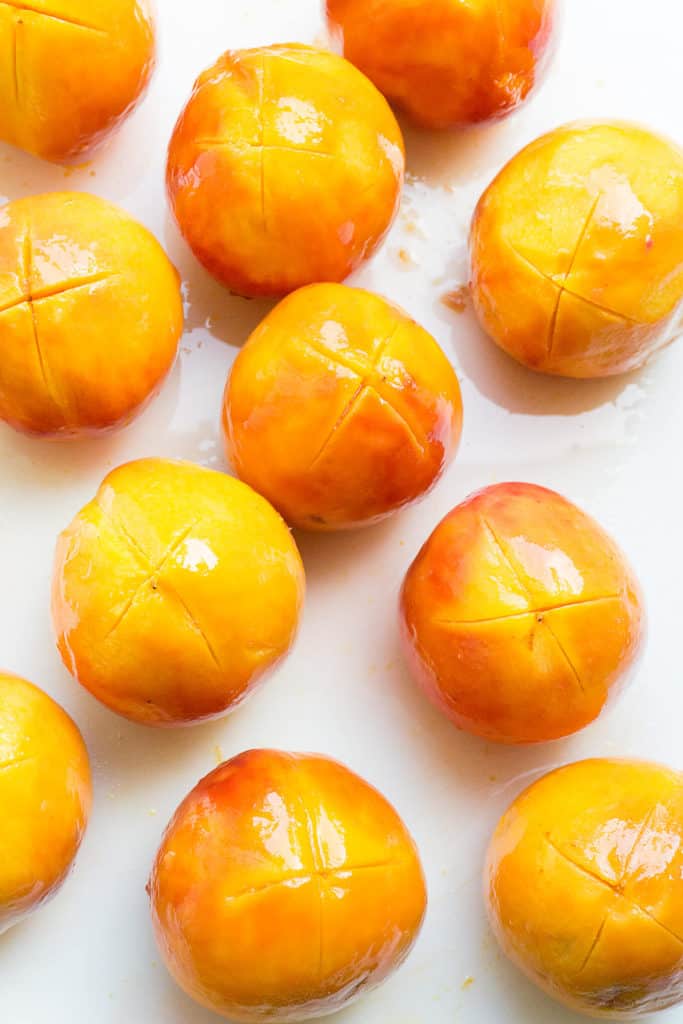
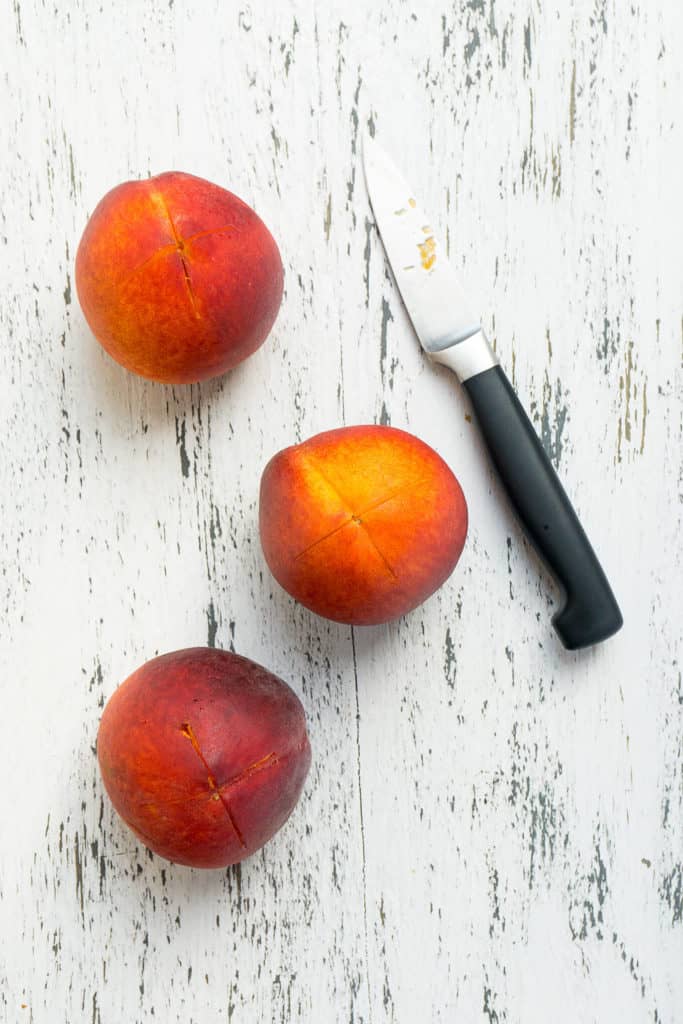
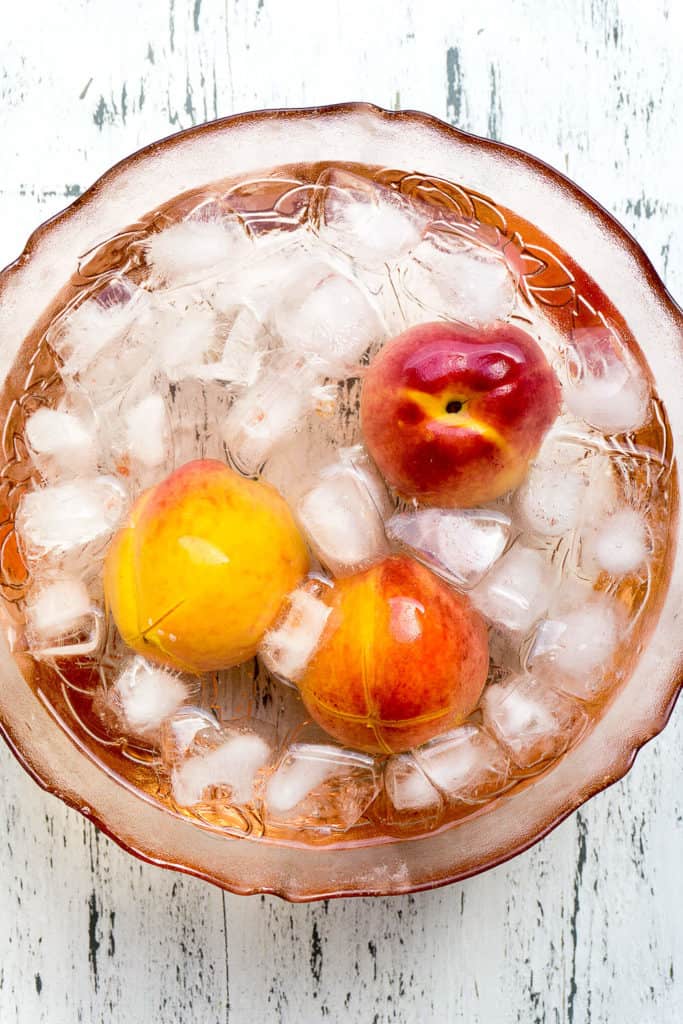
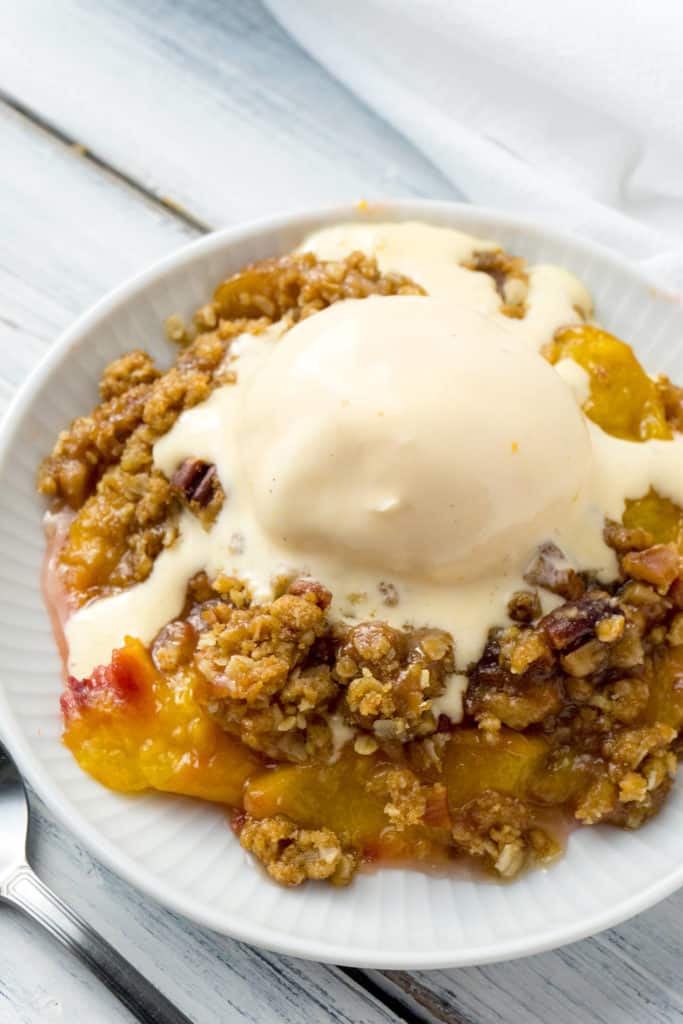
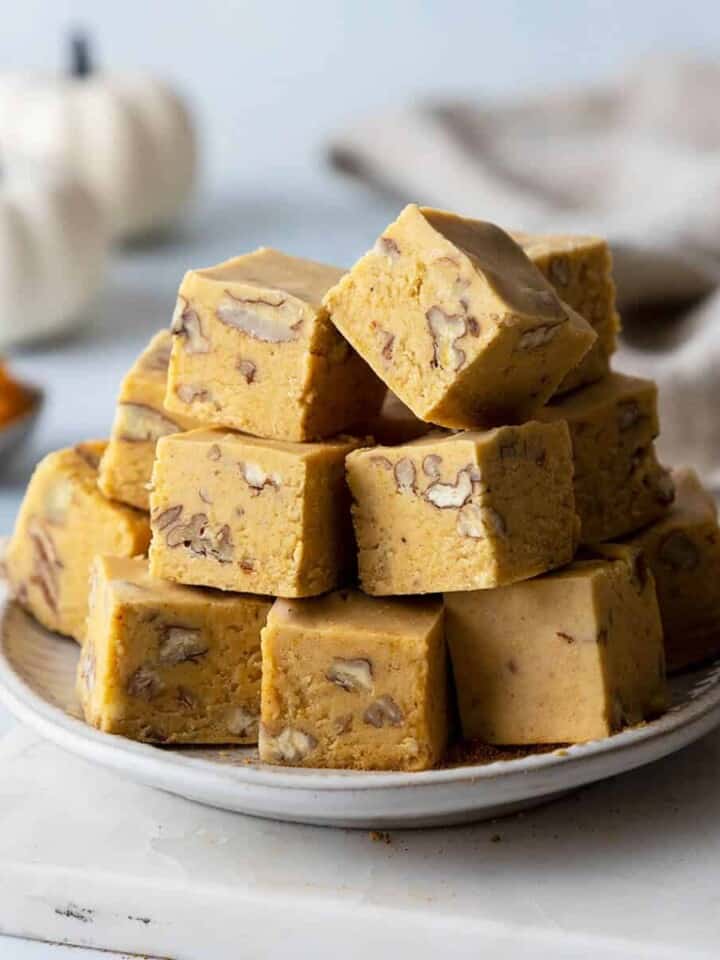



Leave a Reply